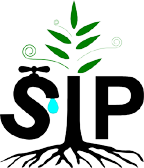2018 Jan 18, 07:00 AM
Gerard: do you have a repository where your MQTT code resides or is it just local?
Dan: I completely agree that writes should be limited to prolong the life of the device. I've been running some home automation software for a few years now. All sensor data and graphs are stored in a compressed ramdisk (zram) and is synced up to a cloud several times per day. If the device reboots it just downloads the last "cloud backup" back into zram disk and continues as normal. ( more on zram at the end )
It appears to me that SIP will be a good platform to build on. Environment data could be kept in small arrays in RAM. Weather forecast, temperature, wind, soil moisture constantly change. Gerald is right in that it will be the software logic that tie the data together.
I'll keep reading through the code to familiarize myself with the back-end of SIP.
==== zram ====
# if you are not worried about RAM size just use tmpfs /dev/shm. If you need more ram-disk space use zram as follows:
modprobe zram num_devices=1
echo 10M > /sys/block/zram0/disksize
mkfs.ext2 /dev/zram0
mount /dev/zram0 /my_storage
#https://wiki.gentoo.org/wiki/Zram
Dean M.
Dan: I completely agree that writes should be limited to prolong the life of the device. I've been running some home automation software for a few years now. All sensor data and graphs are stored in a compressed ramdisk (zram) and is synced up to a cloud several times per day. If the device reboots it just downloads the last "cloud backup" back into zram disk and continues as normal. ( more on zram at the end )
It appears to me that SIP will be a good platform to build on. Environment data could be kept in small arrays in RAM. Weather forecast, temperature, wind, soil moisture constantly change. Gerald is right in that it will be the software logic that tie the data together.
I'll keep reading through the code to familiarize myself with the back-end of SIP.
==== zram ====
# if you are not worried about RAM size just use tmpfs /dev/shm. If you need more ram-disk space use zram as follows:
modprobe zram num_devices=1
echo 10M > /sys/block/zram0/disksize
mkfs.ext2 /dev/zram0
mount /dev/zram0 /my_storage
#https://wiki.gentoo.org/wiki/Zram
Dean M.




